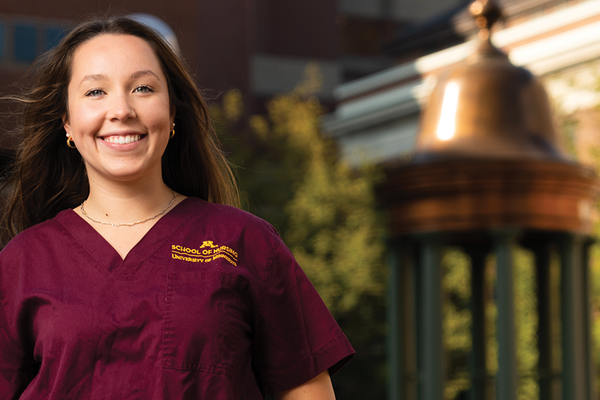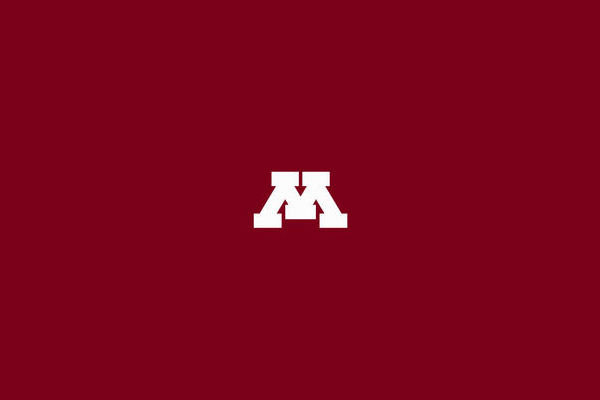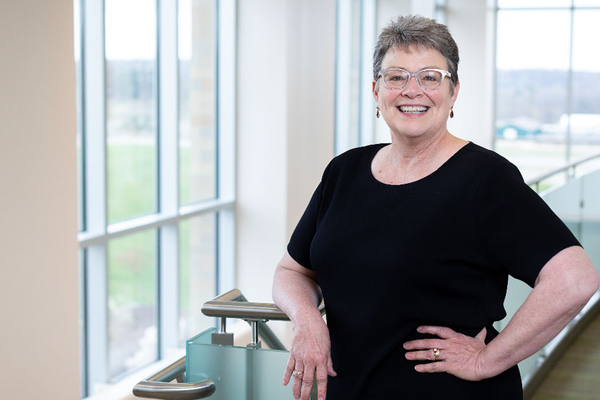Setting the path for more American Indian nurses
As the 14th American Indian nurse to earn a PhD, alum Misty Wilkie says representation matters
November 2, 2021
Brett Stursa

Above: As a professor at Bemidji State University, Misty Wilkie recently received renewed funding for Niganawenimaanaanig, a program designed to provide holistic support for American Indian students named after an Ojibwe phrase that means “we take care of them.”
While a nursing student at Bemidji State University, Misty Wilkie learned there were only 12 American Indian nurses with PhD degrees. Knowing the importance of representation and valuing being a role model, she was motivated to earn one herself.
“I didn’t really know what a PhD in Nursing meant, I just knew that 12 was a really low number and we needed more of those,” says Wilkie, an enrolled member of the Turtle Mountain Band of Chippewa Indians in North Dakota.
Wilkie went on to earn a PhD in Nursing from the University of Minnesota in 2009, becoming the 14th American Indian nurse to earn the degree. She’s now dedicated her career to ensuring more American Indians become nurses and has earned some of nursing’s highest honors, including being inducted as a Fellow into the American Academy of Nursing in 2018.
“Representation matters,” says Wilkie, PhD, RN, FAAN. “To me, having more American Indian nurses and more diverse nurses really improves the health outcomes of that population. And so I knew that in order to advance diversity in nursing, I had to advance myself and be a role model.”
Nursing origins and monumental mentors
Wilkie’s career in nursing has its origins in an experience she had when her 5-month-old son Zachary suffered a stroke.
“I was 18 at the time and I was a single mom, and we spent two weeks at the University of Minnesota Children’s Hospital,” says Wilkie. “It was Zachary’s primary nurse Roni—I still remember her name—who would explain what things were going on and what the doctors were thinking and what the treatment was going to be. She’s the reason I became a nurse.”
After earning an associate’s degree from Hibbing Community College and a bachelor’s degree from Bemidji State University, Wilkie was recruited by the director of the Recruitment and Retention of American Indians in Nursing (RAIN) program at the University of North Dakota (UND) to enroll in the master’s program and then attend the University of Minnesota to earn a PhD.
It was during her time at UND that she first experienced having other American Indian nursing students in her classes. “In my two-year and four-year programs, I was the only minority,” says Wilkie. “I noticed that and it was lonely.”
At the University of Minnesota, Professor Sue Henly was awarded funding to increase the number of American Indians with a PhD in Nursing. A bridge program between UND and the U of M was created to ease the transition for students. “The bridge program was pivotal for me. At the time, the U of M had the most American Indian nursing faculty than any other university in the country, with Margaret Moss, Roxanne Struthers and Felicia Hodge. Having them as a mentors was monumental for me,” says Wilkie.
Creating Niganawenimaanaanig
After earning her PhD degree, Wilkie returned to Bemidji State in 2013 as a faculty member. She was surprised by the demographics of the student body and how few American Indians were in nursing. “Bemidji is at the center of the three largest reservations in Minnesota, so I wondered where all of the American Indian students were at,” says Wilkie.
When a Health Resources Services Administration (HRSA) nursing workforce diversity grant opened for submissions, Wilkie and a group of others on campus who were asking the same question submitted a proposal.
In 2017, she was awarded a four-year, $2 million grant to increase the number of American Indian students. The grant helped launch Niganawenimaanaanig, a program designed to provide holistic support for American Indian students named after an Ojibwe phrase that means “we take care of them.”
The program provides students with tuition scholarships, monthly stipends, and other support including tutors, student mentors and opportunities to network to increase the chances for their success.
In four years, Niganawenimaanaanig served 38 nursing students from 15 different tribal nations and has graduated 17 nurses who are now working in underserved communities.
Wilkie says the program design was shaped her own higher education experiences, both the challenges and successes. “Building a sense of community was a big part of what I put into Niganawenimaanaanig,” says Wilkie.
Earlier this year, Niganawenimaanaanig received renewed funding from HRSA, with a four-year, $2.2 million grant. The new funding allows the program to fully fund full-time students and increase stipends.
“I think my belief and my passion for this much needed program, along with a supportive partnership with the university, has helped make it successful,” says Wilkie, who was promoted to full professor earlier this year. “I have very strong feelings about making sure that students are taken care of and we’re doing everything we can to help them be successful.”
An eye on declining morbidity, mortality rates
The stakes are high. American Indians and Alaska Natives have the highest rates of poverty, depression, addiction, suicide, domestic violence and diabetes in the United States. At the same time, a 2017 National Council of State Boards of Nursing survey found that nurses from minority backgrounds represented 19.2% of the RN workforce, with American Indians/Alaskan Natives comprising only 0.4%.
“American Indians have a difficult time trusting people outside of their social network or cultural network. Having an instant rapport and trust that comes with an American Indian nurse I think speeds up their healing process and gets them healthier quicker,” says Wilkie. “Hopefully that helps manage their chronic illnesses better, so their morbidity rates decline and the mortality rates decline.”
To not be forgotten anymore
As Wilkie reflects on her career, she surprises herself at where it has taken her. “I never in a million years would have imagined myself being here,” says Wilkie. “I grew up on the Spirit Lake reservation in North Dakota for the first 12 years of my life, and then I went to Standing Rock in North Dakota and to Rosebud, South Dakota, which is one of the poorest reservations in the country, so I’ve seen a lot of really bad things, but I have also seen a lot of good and positive things too.”
Never one without a new goal on the horizon, she says she sees raising the visibility of American Indian nurses as a new challenge. “It feels like we’re minorities of the minorities,” says Wilkie.
Currently, she serves on the American Academy of Nursing Diversity and Inclusivity committee and AACN’s Diversity, Equity, and Inclusion Leadership Network.
“I am just shocked at how many times American Indians are left out of conversations on diversity,” says Wilkie. “I just think, ‘When will we not be forgotten anymore?’ I don’t know how I’m going to get there, but that’s my next goal, whatever I can do to help us not be forgotten anymore.”


